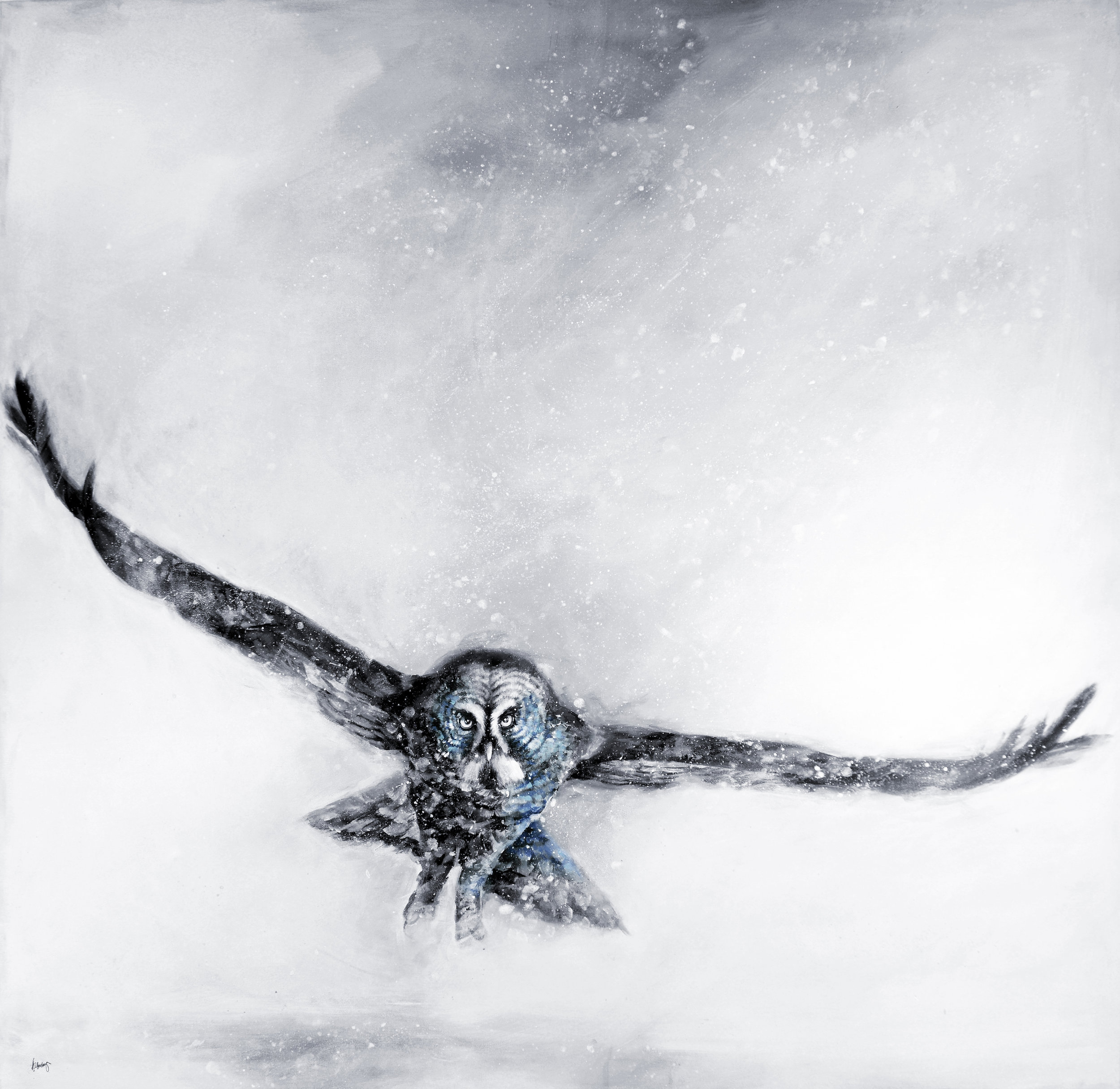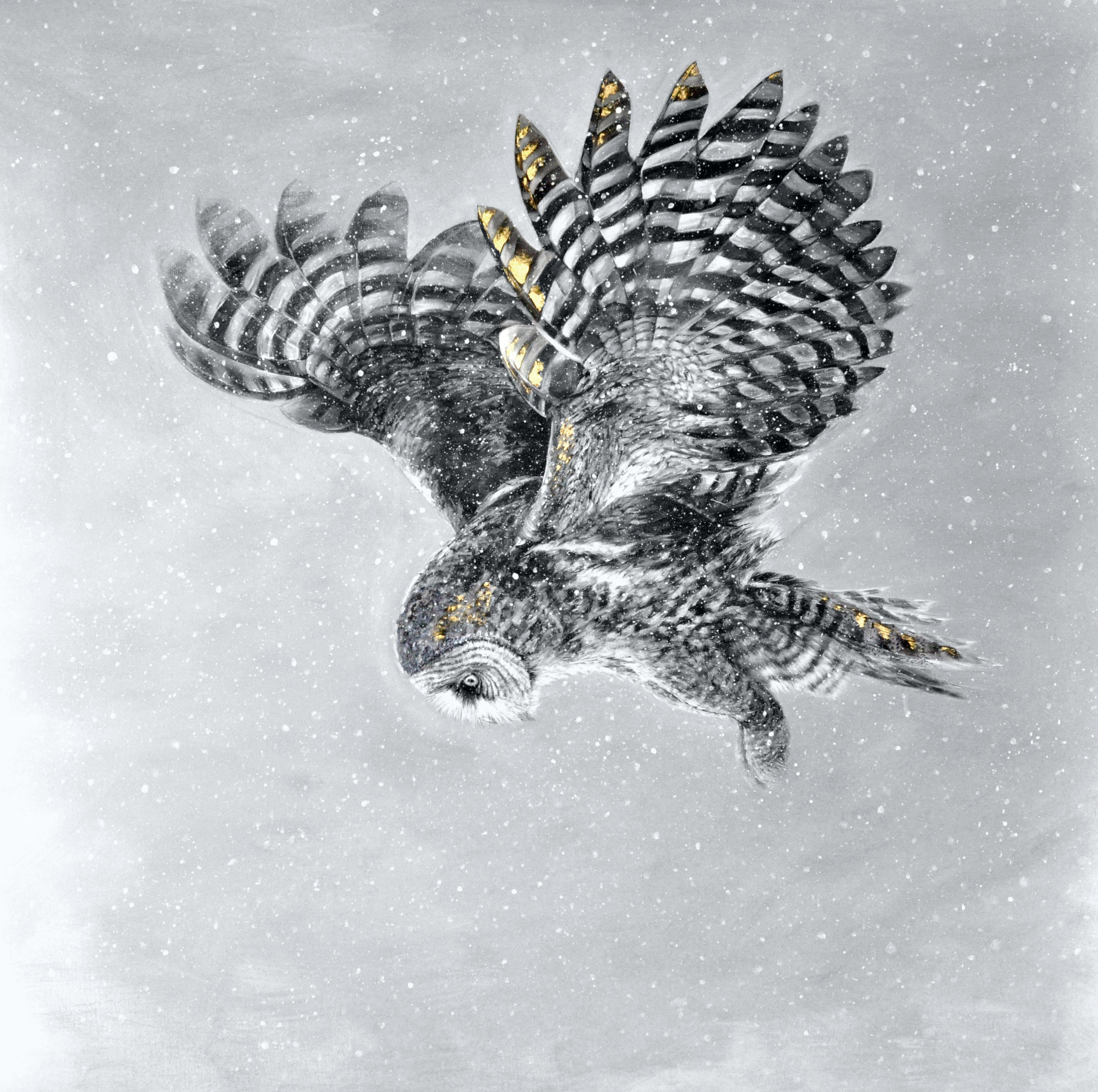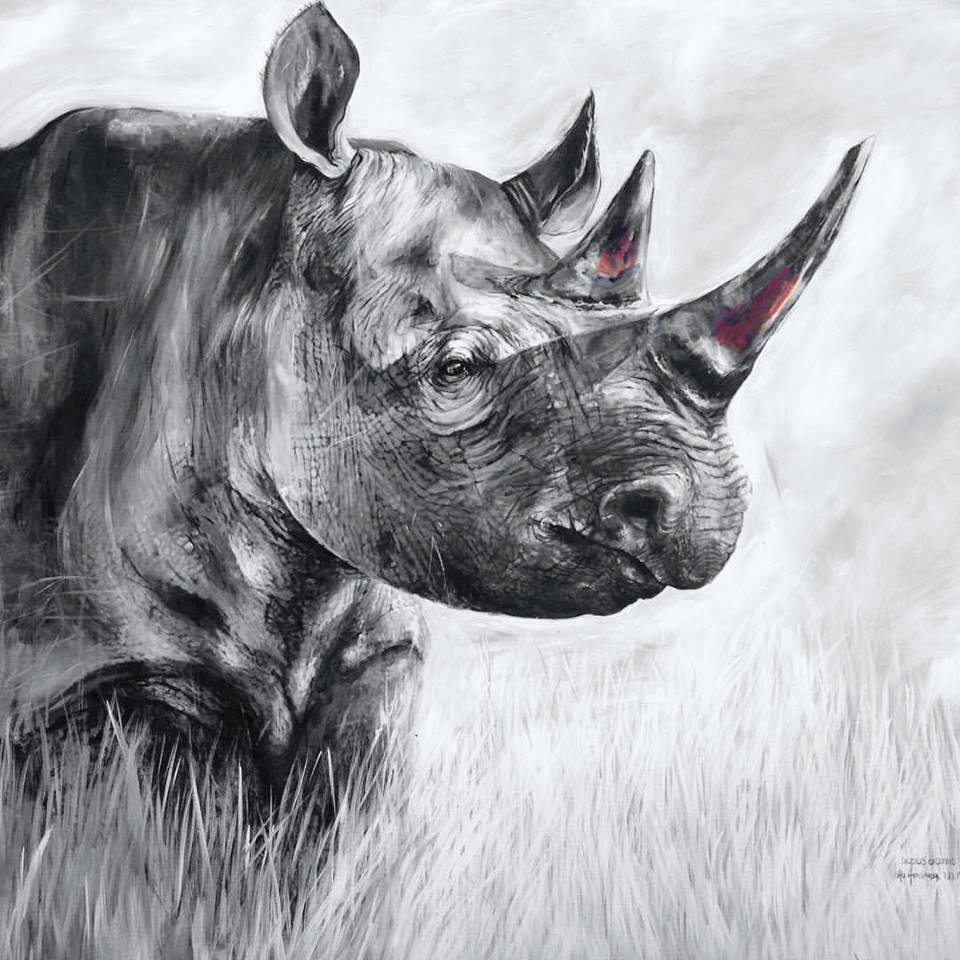(LEFT) SOLD | 48x48 acrylic painting of the Great Gray Owl
10% of the sale went to Yosemite Conservancy
(Right) $5,400 | 48x48 acrylic painting of the Great Gray Owl with 24k Gold.
10% will be donated!
Great Gray Owl (Strix nebulosa)
Conservation Status: endangered to the state of California
Main Threats: habitat Loss and development pressures
Population: 200-300
“Yosemite, today, is the southernmost range and last sanctuary of almost all of California's great gray owls, listed as California State Endangered Species. Researchers estimate there are only about 200 to 300 individuals in California, and about 65% of the state's population resides in Yosemite. Great gray owls nest in the middle elevations of the park where forests and meadows meet. They can be active at any time of the day or night, preferring to hunt in open meadows and clearings within the forest.Then, in winter, they move downslope to snow-free areas where they can more easily access their rodent prey.
This rare and endangered owl is the largest North American owl but also can be found in Asia and Europe. It stands as tall as 2 feet with a 5-foot wingspan and has distinctive piercing yellow eyes accented by large facial disks.”
Read more from the National Park Services’ article HERE



